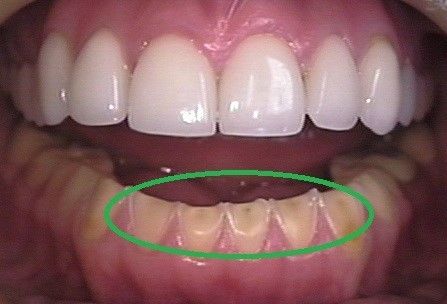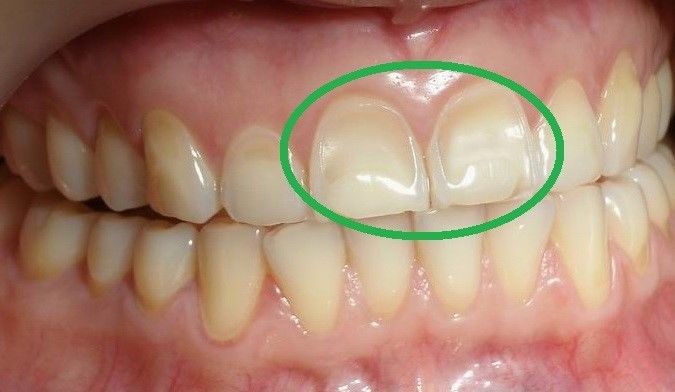As we all know, tooth decay is a problem that plagues many people. Simple tooth decay (without developing into pulpitis and other diseases) is relatively easy to solve. But some dental diseases, once they occur, are more difficult to treat than tooth decay. Today we will talk about one of them – tooth erosion.
What does an acid-etched tooth look like?
There are two main changes in teeth damaged by acid erosion: one is color change; the other is morphological change.
There are also two types of tooth color changes caused by acid erosion: the first type usually occurs on the incisal edge of the central incisor, which is characterized by a transparent incisal edge, which is the thinning of tooth enamel after erosion. results; the second is a yellowish change on the eroded tooth (see image below). This happens when the white, translucent enamel on the outer layer of the tooth is completely eroded away, exposing the yellowish dentin in the inner layer.

The morphological changes of the etched teeth can be manifested in that the tooth surface (such as the labial surface of the anterior teeth) is wide Round concave surface (see image below). When the erosion is at its worst, a tooth may even be fractured.

What causes acid etching?
The answer is simple, sour. But there are many sources of acid, some of which you may not even think of!
Among them, carbonated beverages are a well-known source. Stomach juice, lemon juice, vinegar, orange juice, beer, coffee and other beverages, some acidic drugs (vitamin C, aspirin, etc.), acid mist or acid anhydride produced by the acid industry may also be the culprits of acid erosion.
The premise of their ability to cause erosion damage to teeth is to maintain the oral environment at a pH <5.5 (the critical pH for decalcification of tooth enamel) and maintain this state for a period of time.
Why is acid erosion more difficult than tooth decay?
Although like tooth decay, acid erosion is a destructive disease of the hard tissue of the teeth, it is more difficult to treat than tooth decay.
Ordinary cavities only need simple repairs. However, teeth that suffer from acid erosion are often unable to be filled. This is because the premise of a successful filling is that the healthy tooth tissue and filling material after filling can both stably exist and support each other.
The lesion area of tooth decay is usually limited in scope and has a certain depth, so the shape of the repaired tooth cavity can easily meet the filling requirements; but the tooth with acid erosion is different, its defect part shape It is often wide in scope and shallow in depth, so fillings are often not firm. Many acid erosion cases can only be treated with prosthetic techniques (eg full crowns).
To prevent acid erosion, do these things
Mere treatment will not solve the root cause of acid erosion. As long as the cause persists, the damage will persist. Therefore, the prevention of acid erosion should start with the cause and minimize the damage of acid as much as possible.
Acid erosion caused by gastric juice is often related to anorexia, gastroesophageal reflux and other diseases, and the above diseases should be treated as soon as possible; frequent or prolonged consumption of carbonated beverages, lemon juice, orange juice, beer, coffee Waiting for drinks, or even like to put these drinks in the mouth, is a bad eating habit and should be avoided as much as possible. It is better to use warm water as a daily beverage, which is good for dental health and general health.
In some disease states, if you need to take some drugs that are acidic or may cause insufficient saliva secretion, special attention should be paid to preventing acid erosion.
In daily care, on the one hand, we should pay attention to the use of fluoride toothpaste, fluoride mouthwash, etc. to enhance the acid resistance of the hard tissue of the teeth; Brush your teeth manually to avoid aggravating acid damage to your teeth.
This article is scientifically checked by Wang Tao, chairman of the Medical Science Popularization Committee of the Chinese Science Writers Association.
Contributed by “Deliver Care”